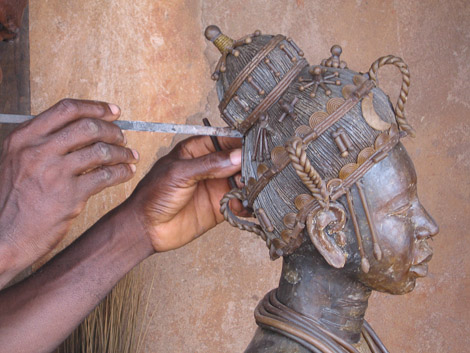The Edinburgh Art Festival (EAF) has managed quite a coup. Weeks before the Scots will cast their votes to decide upon their country’s independence, on September 18, the festival has opened one of its main exhibitions in the debating chamber of the city’s Old Royal High School. Repurposed as the New Parliament House in the 1970s, the building was destined to a devolved Scottish Assembly. That didn’t come to pass, at least not then. When the Scottish Parliament was finally established in 1999, it went elsewhere, and the debating chamber’s unused microphones and futuristic furniture continued to freeze in time.
Locked up for decades, this topical time capsule is the site of a substantial display by Amar Kanwar. His multi-faceted project The Sovereign Forest (2011–2014) examines the struggles surrounding the appropriation of land by corporations in the state of Odisha, Eastern India. The artist’s method is investigative, his mode of presentation pseudo-scientific. Shown in the assembly chamber, the film The Scene of Crime (2011) is organized in a series of chapters—Kanwar calls them “maps”—presented to the audience like pieces of evidence to a jury. Yet Kanwar’s modus operendi is primarily poetic. The film unravels as a celebration of the Odishan landscape, where each blade of grass, luxuriant paddy field, and ray of moonlight is a character in its own right.
Other rooms have the feel of a secret archive, articulated around an alcove in which dozens of small boxes hang on the wall. They contain different varieties of indigenous rice grown in the region, inventorying the local richness threatened by industrialization. By the exit, a small booklet documents a referendum in which the representatives of a group of Indian villages had to indicate whether or not they thought gods lived in the surrounding mountains. (One gets the sense that their presence may be getting in the way of commerce.) The Scottish National Party, Scotland’s use of the pound sterling, and the country’s place within the European Union should it become an independent state are not as far is it could first seem. Kanwar deals with the same fundamentals: the right people have to decide the destiny of the land they occupy, the difficulty of living together, and the frictions between the have and the have nots.
These themes fashion most of EAF’s 11th edition. It was perhaps inevitable. Referendum politics aside, Scotland is playing host to the Commonwealth Games in Glasgow this summer, and money has been pouring in to support Scottish showcases of all stripes. A behemoth series of exhibitions, GENERATION, celebrates 25 years of art production in Scotland in 100 venues throughout the country (and several shows in Edinburgh seem to have adopted both the GENERATION and the EAF’s hats). But rather than go all-Scot, EAF has seized the opportunity to make a show reflecting on the Commonwealth, its history, legacy, and compromises.
While one might be tempted to recoil in horror at such a box-ticking, fund-raising-friendly umbrella, EAF—and its five guest curators hailing from different corners of the Commonwealth—has come up with a show which is as multifarious, messy, and compromised as the concept of the Commonwealth itself. Titled after Shilpa Gupta’s neon piece Where Do I End and You Begin (2012), the exhibition doesn’t give any answers, nor does it champion patronizing messages. It does, however, tease out the uncomfortable realities of this cumbersome post-colonial entity.
At the City Art Gallery, a large tent made with invented national flags by Emma Rushton and Derek Tyman houses a video piece discussing the history of the Commonwealth, and its faux-utopian agenda. Uriel Orlow’s Benin Project (2007–2008) reflects on the punitive expedition British launched against Benin City in 1897, which ended the Kingdom of Benin. The Benin bronzes were famously looted, but the bronze tradition continued, and the artist visited today’s craftsmen, the guardians of a skill that continued beyond the end of the civilization that nurtured it. Past and present bleed into each other. In Rebecca Belmore’s light-box Fringe (2008) a reclining woman is seen from behind. She bears a long wound on her back, sewn shut by delicately beaded threads. The threads have blood-like drops, and the beads identify her as from a first First Nation minority whose women suffer a particularly high level of violence.
“Where Do I End and You Begin” is the first exhibition directly curated by EAF. Until recently the festival was primarily coordinating individual initiatives—a move initially spurred by the desire to promote visual art in the city when Edinburgh becomes the world’s capital of theater. But the ambition of the show and the curators’ enthusiasm in embracing a difficult topic in all its complexity is proof that EAF has become much more than just the sum of its parts. This 11th edition could well be its coming of age.
